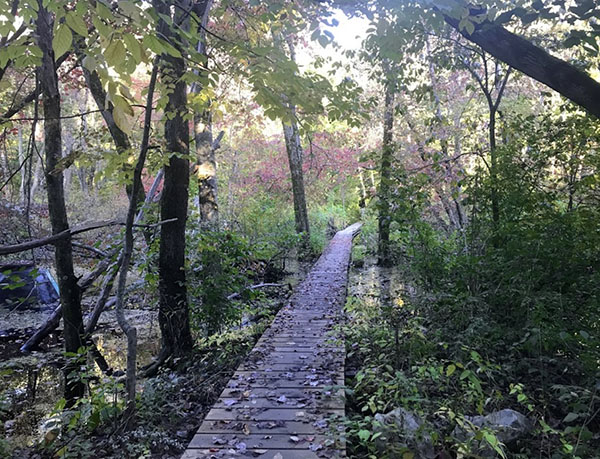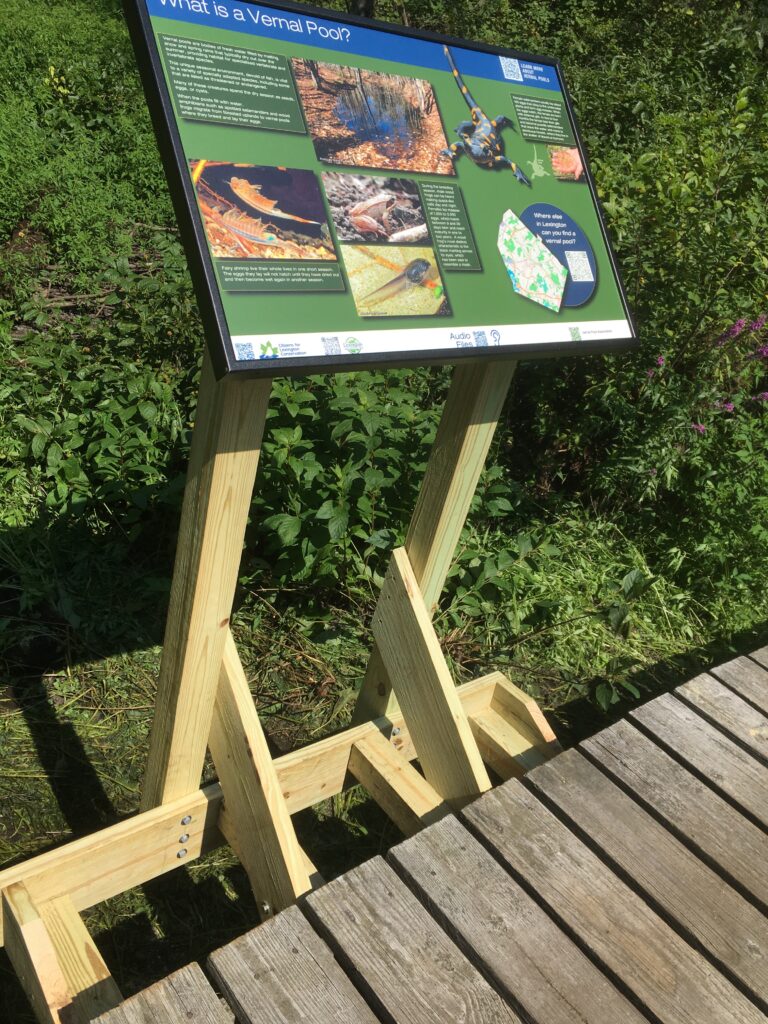
Vernal pools are seasonal bodies of fresh water that provide critically important habitat for many vertebrate and invertebrate species, some of which can only survive in this type of environment. Vernal pools occur in almost every town in Massachusetts.
For information on this page about the nature, functions and locations of vernal pools, click on any of the links below:
- Videos about vernal pools
- Locations of vernal pools in Lexington
- A detailed outline of the sign about vernal pools located in Hayden Woods conservation area in Lexington, MA
- Multilingual audio files of the information on the vernal pool sign
- A map showing the location of the nearest parking lot for the vernal pool in Hayden Woods
- A google map showing the location of the vernal pool sign in Hayden Woods
You can learn more at the website of the Vernal Pool Association.
Selected Videos about Vernal Pools
Here are a small selection of videos that show you the richness of life that takes place in vernal pools.
This video by The Trustees is a fun intro to vernal pools.
This video by Kiley Briggs is a detailed explanation of the biodiversity found in vernal pools.
This video by The Nature Conservancy gives you a close up look at the creatures you might see in a vernal pool.
This is a map of all certified vernal pools in and near to Lexington.
This map was made from the online interactive map created by the Commonwealth of Massachusetts.
You can visit the mapping site here and see not only all vernal pools, but also many other kinds of mapping data.
Keep in mind that the mapping system is very dense with graphics and may be difficult to use on a phone.
The Vernal Pool Interpretive Sign at Hayden Woods
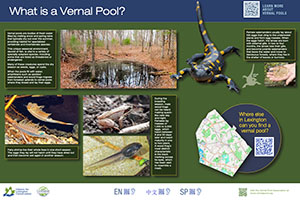
Following is a web version of our interpretive sign at Hayden Woods, for those who are only able to visit this remarkable location online.

Vernal pools are bodies of fresh water filled by melting snow and spring rains that typically dry out over the summer, providing habitat for specialized vertebrate and invertebrate species.
This unique seasonal environment, devoid of fish, is vital to a variety of specially adapted species, including some that are listed as threatened or endangered.
Many of these creatures spend the dry season as seeds, eggs, or cysts.
When the pools fill with water, amphibians such as spotted salamanders and wood frogs migrate from forested uplands to vernal pools where they breed and lay their eggs.
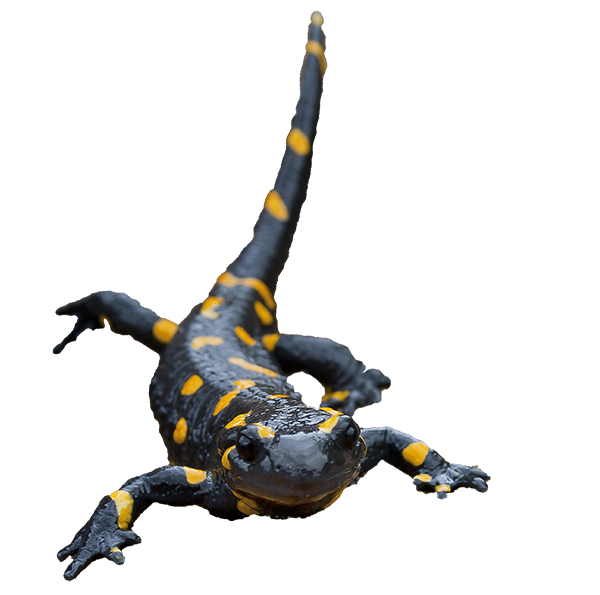
Female salamanders usually lay about 100 eggs that cling to the underwater plants and form egg masses. When the eggs hatch, the larvae are born with external gills. In two to four months, the larvae lose their gills, and become juvenile salamanders that leave the water and move to deciduous forests, where they live in the shelter of leaves or burrows.

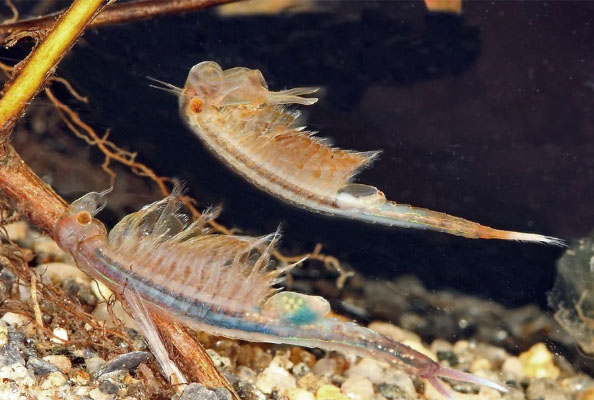
Fairy shrimp live their whole lives in one short season. The eggs they lay will not hatch until they have dried out and then become wet again in another season.

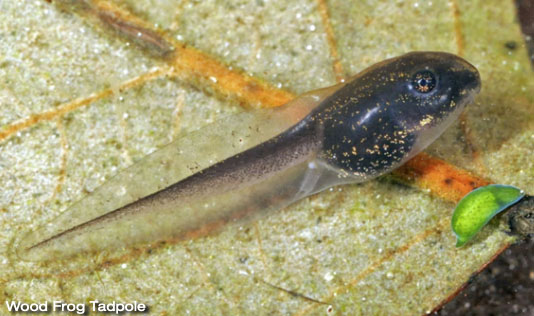
During the breeding season, male wood frogs can be heard making quack- like calls day and night. Females lay masses of 1,000 to 3,000 eggs, which hatch between 9 and 30 days later and reach maturity in one to two years.
A wood frog’s most distinct characteristic is the black marking across its eyes, which has been said to resemble a mask.
Hayden Woods Vernal Pool
Use this map to locate the closest parking lot for accessing the Hayden Woods trail head leading to the vernal pool. There are designated trail head parking spots at the rear of the office park parking garage for 65 Hayden Avenue.
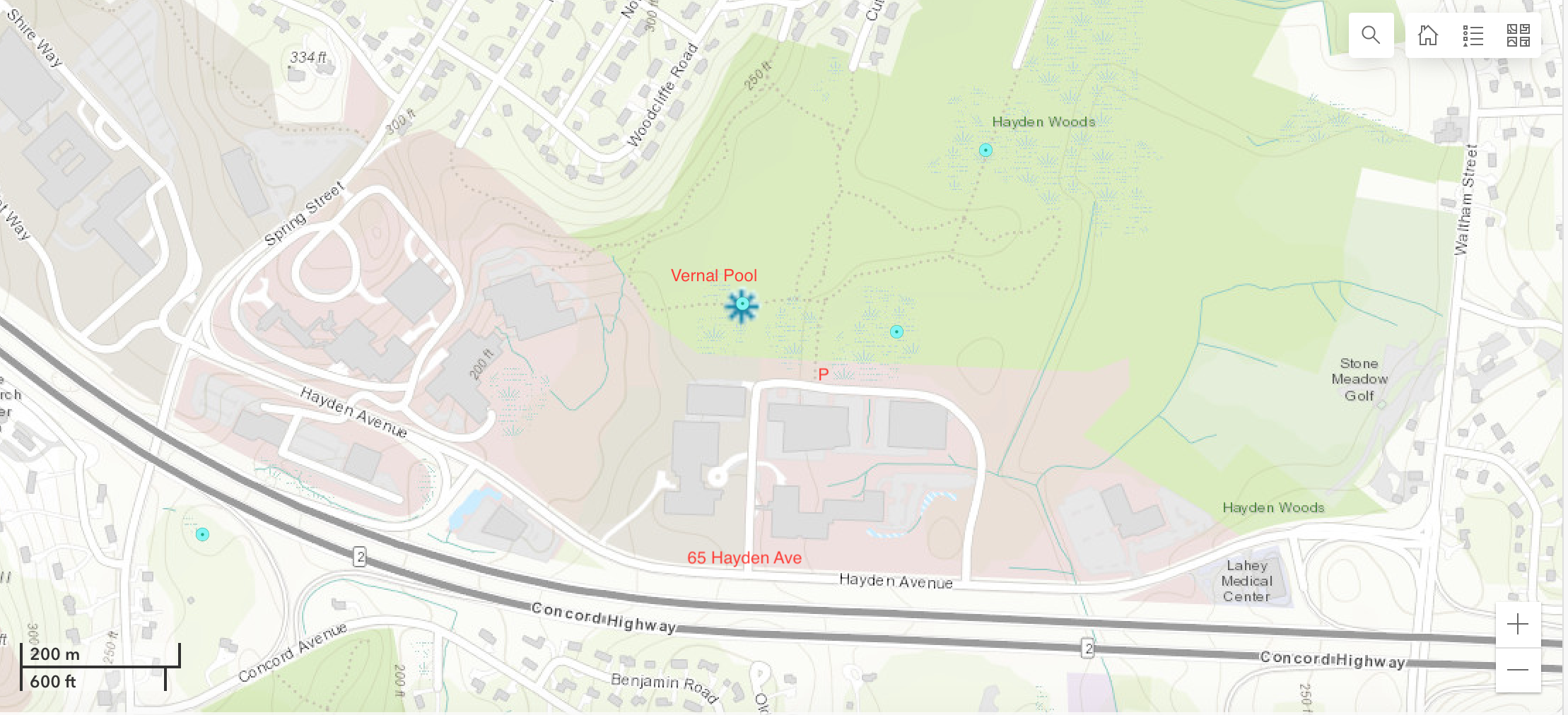
Hayden Woods Google Map
This is the Google map that can be used to find Hayden Woods.
Audio Files:
ENGLISH:
 Mandarin:
Mandarin:
ESPAÑOL:
